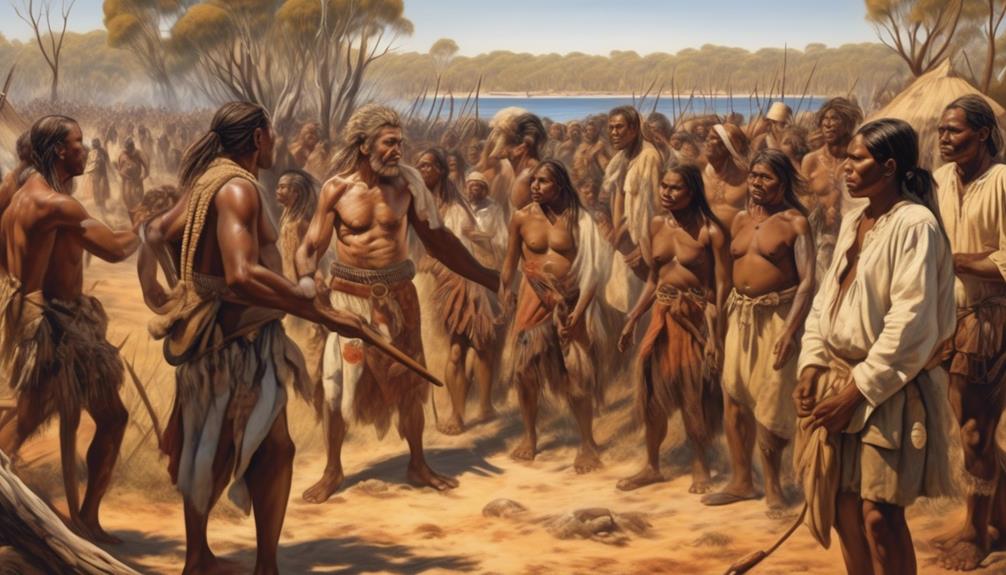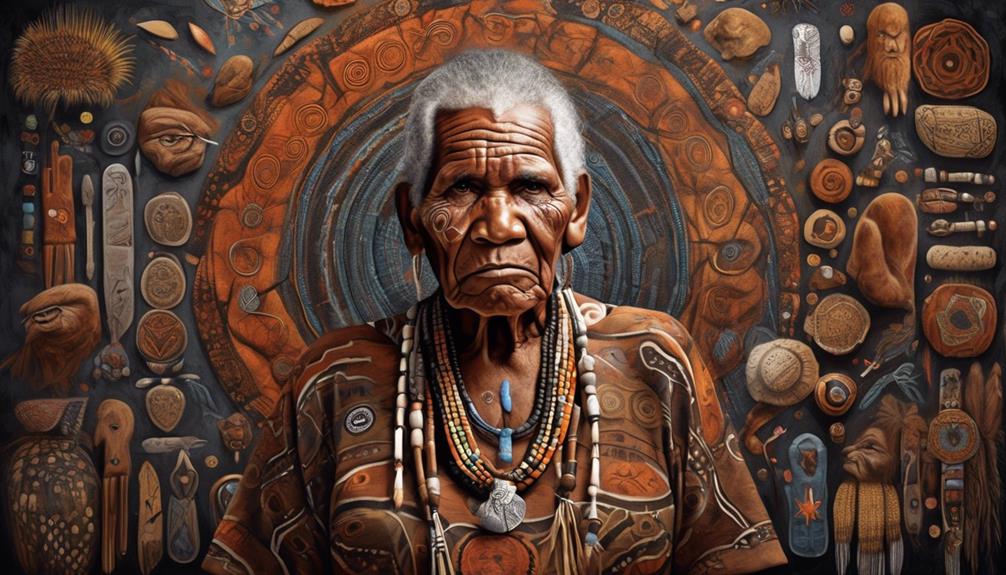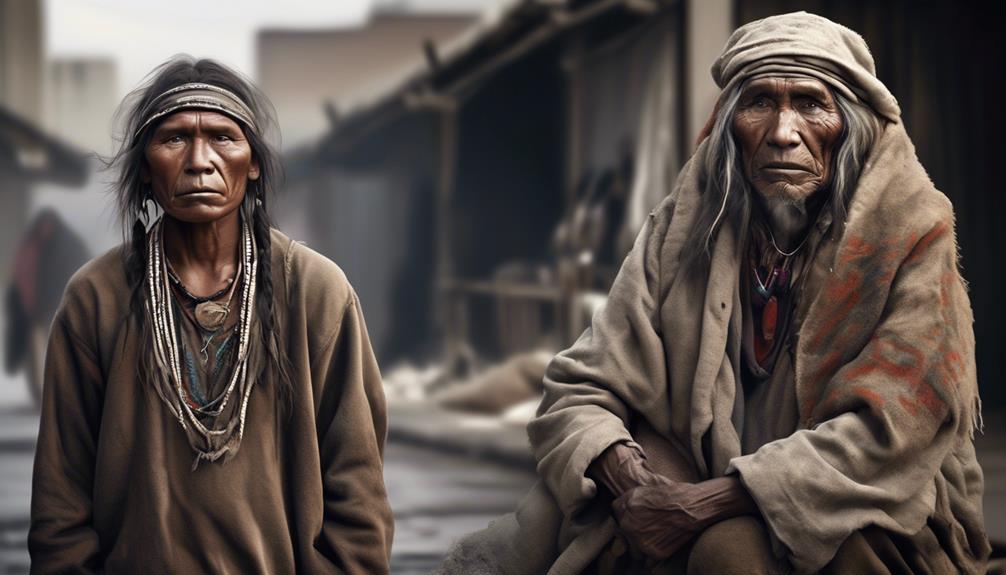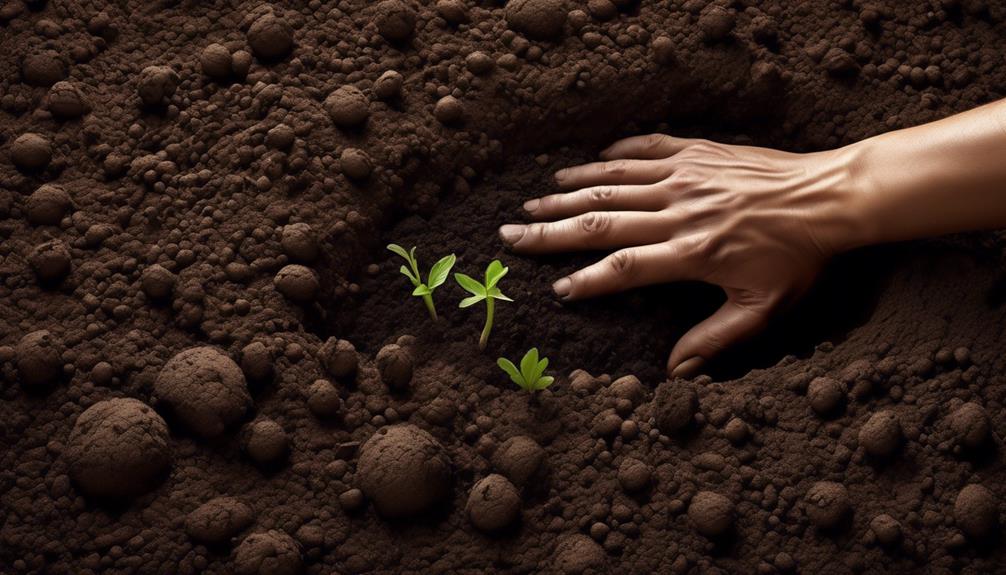We often hear about the British colonization of Australia, but what may not be widely known is the harsh treatment of the Aboriginal Australians during this period. The consequences of white settlement on the native population were significant and continue to have lasting effects that are still felt today.
From land dispossession to violent conflicts and forced assimilation, the treatment of the Aboriginal Australians during white settlement was marked by a series of oppressive policies and actions. These historical injustices have shaped the social, economic, and cultural landscape of Australia in ways that demand our attention and understanding.
Key Takeaways
- Aboriginal Australians were forcibly dispossessed of their ancestral lands, leading to immeasurable trauma and loss.
- The implementation of forced assimilation policies resulted in the loss of traditional languages, customs, and practices, causing deep trauma and disconnection.
- Discriminatory policies perpetuated systemic inequities and injustices, denying basic rights and freedoms and leading to social exclusion and the loss of cultural identity and heritage.
- The intergenerational trauma caused by historical injustices has had long-term impacts on mental health, social dynamics, and cultural preservation, highlighting the need for healing and restoration efforts.
Land Dispossession
During white settlement, Aboriginal Australians were forcibly dispossessed of their ancestral lands, leading to profound and enduring consequences for their communities. The cultural loss and displacement resulting from this dispossession have had a devastating impact on the Aboriginal people. Their connection to the land is deeply spiritual and integral to their cultural identity, so being forcibly removed from their traditional lands has caused immeasurable trauma and loss. This displacement has disrupted age-old traditions, ceremonies, and knowledge systems, contributing to a profound sense of disconnection and loss of cultural heritage.
Moreover, the economic exploitation and inequality that accompanied land dispossession further compounded the adversity faced by Aboriginal Australians. The loss of their lands meant not only a loss of cultural heritage but also a loss of economic independence and stability. The dispossession led to widespread poverty, as the Aboriginal people were deprived of the resources and means to sustain themselves as they had for generations. This economic exploitation entrenched inequality, perpetuating a cycle of disadvantage that continues to marginalize Aboriginal communities today.
Understanding and acknowledging these historical injustices is crucial in fostering empathy and working towards serving the needs of the Aboriginal Australian community.
Violent Conflicts
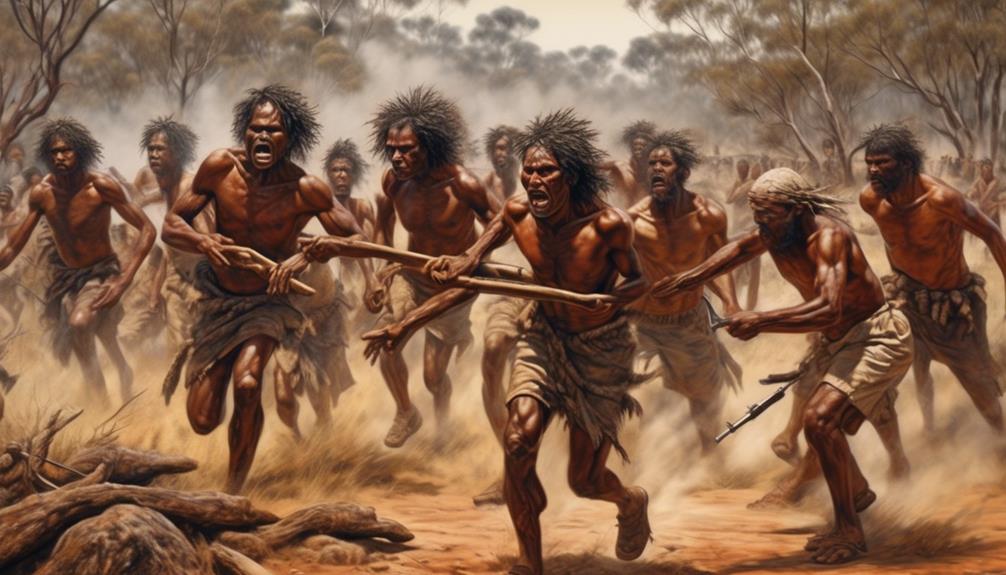
The traumatic history of land dispossession has left a lasting legacy that spills over into the violent conflicts experienced by Aboriginal Australians. The intergenerational trauma resulting from historical injustices has deeply affected the Aboriginal communities, leading to ongoing violent confrontations and struggles for justice. As a society, we must acknowledge the pain and suffering caused by these injustices and work towards reconciliation efforts that prioritize the cultural preservation and well-being of Aboriginal Australians.
| Reconciliation Efforts | Cultural Preservation |
|---|---|
| Engaging in meaningful dialogues and partnerships with Aboriginal communities | Supporting traditional practices and knowledge |
| Implementing policies that address historical injustices and promote equality | Empowering Aboriginal voices in decision-making processes |
The violence and conflicts stemming from past wrongdoings cannot be overlooked. It is imperative to actively address the historical injustices and their impacts, fostering healing and understanding. By supporting initiatives that uphold cultural preservation and promoting reconciliation efforts, we can contribute to a more equitable and harmonious future for all Australians. It is our collective responsibility to rectify past wrongs and create a society that values and respects the cultural heritage of Aboriginal Australians.
Forced Assimilation
We must recognize the damaging impact of forced assimilation policies on Aboriginal Australians, acknowledging the ongoing repercussions that continue to affect their communities today. Cultural erasure, a result of the forced assimilation policies, has led to the loss of traditional languages, customs, and practices that are integral to the identity and well-being of Aboriginal peoples. The deliberate suppression of indigenous cultures has caused deep trauma and disconnection from ancestral heritage, perpetuating a cycle of intergenerational trauma within Aboriginal communities.
The resistance and resilience of Aboriginal communities in the face of forced assimilation can't be overstated. Despite the oppressive policies aimed at eradicating their cultural identities, Aboriginal Australians have demonstrated remarkable strength in preserving and revitalizing their traditions. The ongoing efforts to reclaim and celebrate indigenous languages, art, and knowledge are powerful acts of resistance against cultural erasure.
As we reflect on the historical and contemporary impacts of forced assimilation, it's crucial to listen to the voices of Aboriginal Australians and support initiatives that honor and amplify their cultural heritage. Acknowledging the enduring effects of forced assimilation is a vital step in promoting healing, justice, and empowerment within Aboriginal communities.
Discriminatory Policies
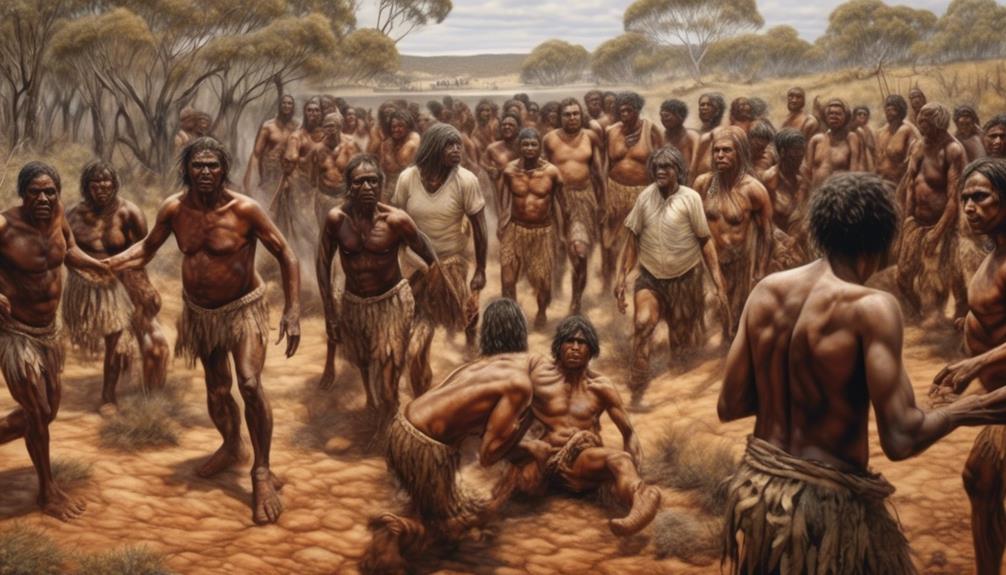
Discriminatory policies perpetuated systemic inequities and injustices that marginalized Aboriginal Australians, exacerbating their historical oppression and disenfranchisement. These policies were designed to systematically disadvantage and exclude Aboriginal people from mainstream society.
The imposition of discriminatory laws, such as the denial of basic rights and freedoms, reinforced a culture of inequality and cultural erasure. Aboriginal Australians were subjected to social exclusion through policies that restricted their movements, denied them access to educational and employment opportunities, and undermined their traditional cultural practices.
These policies not only perpetuated a cycle of poverty and disadvantage within Aboriginal communities but also led to a loss of cultural identity and heritage. The impact of these discriminatory policies continues to be felt today, as Aboriginal Australians still grapple with the intergenerational effects of social exclusion and cultural erasure.
It's essential to acknowledge the lasting harm caused by these policies and work towards creating a more inclusive and equitable society that values and respects the rights and contributions of Aboriginal Australians.
Long-term Impacts
The enduring consequences of these policies have profoundly shaped the experiences and opportunities of Aboriginal Australians, perpetuating cycles of disadvantage and cultural depletion for generations.
The intergenerational trauma resulting from past injustices continues to impact Aboriginal communities, affecting mental health, social dynamics, and cultural preservation. The trauma experienced by previous generations has been passed down, compounding the challenges faced by contemporary Aboriginal Australians. This ongoing trauma manifests in various forms, including higher rates of mental health issues, substance abuse, and family breakdowns within Aboriginal communities.
Furthermore, the erosion of cultural identity and practices due to historical injustices has led to a struggle for cultural preservation. The loss of language, traditions, and spiritual connections has had profound effects on the well-being of Aboriginal Australians.
It's crucial to recognize the long-term impacts of discriminatory policies and work towards healing these deep-seated wounds. By acknowledging the intergenerational trauma and supporting efforts for cultural revitalization, we can strive to empower Aboriginal communities and contribute to the restoration of their well-being and cultural heritage.
Frequently Asked Questions
How Did the Traditional Aboriginal Culture Influence the Development of Australian Society After White Settlement?
We can see the traditional Aboriginal culture's profound influence on Australian society after white settlement. Cultural assimilation disrupted Indigenous practices, but their influence is evident in art, music, and language.
Acknowledging this history is crucial for healing and moving forward. Embracing and celebrating Indigenous influence enriches our society and fosters inclusivity.
It's essential to listen, learn, and support Indigenous communities as we strive for a more equitable and respectful future.
What Role Did Aboriginal Australians Play in Shaping the Modern Australian Economy and Workforce?
We recognize the significant contributions of Aboriginal Australians to the modern Australian economy and workforce.
Their economic integration has enriched our society and added valuable perspectives.
It's crucial to acknowledge and support their ongoing role in shaping the country's economic landscape.
Embracing their contributions fosters a more inclusive and equitable society, where all voices are heard and valued.
We're committed to advocating for their continued empowerment and recognition in the workforce.
How Have the Relationships Between Aboriginal Australians and Non-Indigenous Australians Evolved in the Years Following White Settlement?
We've witnessed the evolution of relationships between Aboriginal Australians and non-Indigenous Australians since white settlement. Reconciliation efforts have been made, but the journey towards genuine understanding and healing is ongoing.
It's vital to acknowledge past injustices and work towards building a more inclusive and empathetic society. By listening, learning, and actively supporting Aboriginal communities, we can contribute to a more equitable and harmonious future for all Australians.
What Efforts Have Been Made to Preserve and Revitalize Aboriginal Languages and Cultural Traditions in Contemporary Australia?
We've witnessed significant efforts in contemporary Australia to preserve and revitalize Aboriginal languages and cultural traditions.
Language preservation initiatives, cultural revitalization programs, and community-led efforts have been pivotal. These endeavors aim to honor and celebrate the rich heritage of Aboriginal Australians while ensuring its continuity for future generations.
It's crucial to acknowledge and support these endeavors, recognizing the significance of preserving and revitalizing indigenous languages and cultural traditions.
What Are Some Examples of Successful Collaborations Between Aboriginal Communities and Government Organizations to Address Historical Injustices and Improve Living Conditions for Indigenous Australians?
We've seen collaborative initiatives and reconciliation projects between Aboriginal communities and government organizations, aiming to address historical injustices and improve living conditions for Indigenous Australians. Examples include land rights agreements, cultural preservation programs, and initiatives to tackle health and educational disparities.
These efforts, rooted in empathy and inclusivity, are critical for serving the needs of Aboriginal communities and promoting lasting positive change.
Conclusion
In the wake of white settlement, the treatment of Aboriginal Australians was nothing short of a violent theft of their land, culture, and rights. Their suffering and resilience is like a deep scar on the face of our nation, a constant reminder of the injustice that was inflicted upon them.
It's our collective responsibility to acknowledge and address the lasting impacts of this cruel history, and work towards healing and reconciliation.
